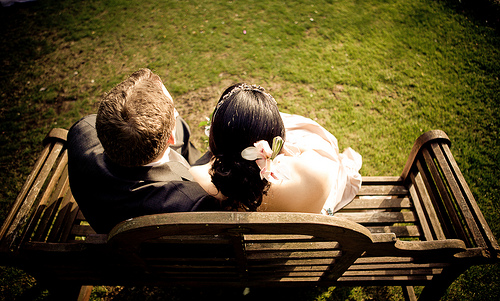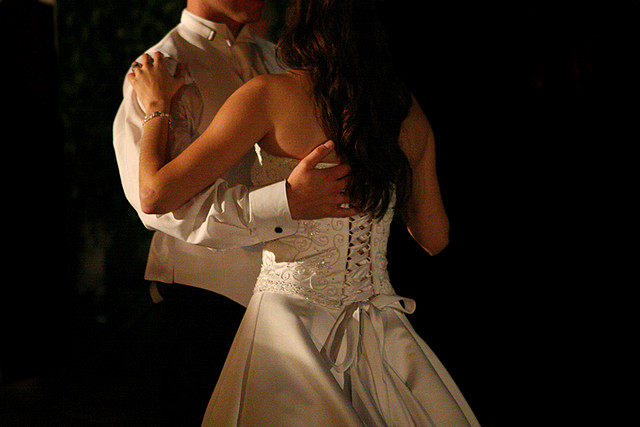7 Top Tips for Surviving a Traditional French Wedding
I attended a French conversation class for several years. During one of those classes, our teacher's sister told us about her traditional Breton wedding. It involved a vast amount of singing, dancing and consuming vast quantities of food, wine (and Calvados from the neighbouring region of Normandy). She confessed that she ate and drank so much that it took her 4 days to recover.
So if you are going to be part of a French traditional wedding, the first tip for surviving is that you need to work on your stamina!
Table of Contents
Photo by Ben Luckman
1. Be in the Right Place at the Right Time
There is no set format for a traditional wedding in France, it varies from region to region and family to family. The key elements are the civil ceremony at the Mairie (Town Hall), which is the official wedding. The guests for this part are usually only family members. This is then followed by the religious ceremony in the local church or chapel. Naturally the happy couple and family need to get from one to the other. In many cases these days, it is the first of several very noisy motorcades with horns blaring, however, the fully traditional transport is a donkey-drawn cart. In our village in the mountains of central France, the donkeys were too weedy to pull the cart up the hill to the Chapel so horses were used!
2. Pack Your Survival Kit
After the religious ceremony comes the photography. This is taken very seriously and is NEVER hurried. The summer is when most marriages happen so you need to be prepared to be standing around for hours, often in blazing hot weather. Every good French traditional wedding survival kit should include sun cream and a bottle of water and maybe a folding seat! On the up-side, it will give you an opportunity to practice your French language skills by chatting to other guests and locals.
3. Book a Taxi or Become Teetotal!
The fourth key element is the vin d'honneur. All guests, including those who are not invited to the wedding meal are invited to this. You will find yourself downing several Kirs (cassis mixed with red wine) and munching on a variety of amuse bouches. Yet another great opportunity for practising French that you may have learnt from your online course in a real situation.
The traditional wedding meal and party follows during the evening. Don't expect it to start until at least 9 or 10 pm. The time between the vin d'honneur and the meal offers another opportunity for the guests to leap into their cars and zoom off on another noisy motorcade. Apparently, this is to ward off evil spirits and to keep the devil away from the couple.
4. Keep the Camera Ready
In days gone by, the tradition was for guests invited to the meal to bring a small cake. These were piled up in the centre of the table and the bride and groom had to kiss over the cakes. If they succeeded without causing the pile to collapse, they would have good luck. This evolved into the elaborate La Pièce Montée (perhaps the result of a clandestine agreement between patissiers and dentists to increase business!). This is a conical shaped wedding cake constructed from profiteroles welded together using caramelised sugar. Sadly, as with all traditions, this is increasingly being replaced with the English and American tiered style of cake.
5. Carry Earplugs!
There are other entertaining pastimes at traditional French weddings. When the bride and groom finally get the chance to retire to bed, the more playful guests will arrange La ChariVari. Once the lights are out, the gang will bang pots and pans together and will only stop when the couple appear in their wedding clothes to dispense more treats in the form of champagne and food. Only then will they get any peace although that is by no means guaranteed as, at any moment, another motorcade could spontaneously arise!
6. Set the Alarm
The following morning, a wedding tradition in some areas of France, the bride and groom are 'hunted down' and forced to drink from a chamber pot. Happily, this is usually filled with champagne or white wine, and perhaps sausages that have been coated in chocolate in order to make the whole experience more realistic. Nice!
7. Above all, Learn the Language
But to truly appreciate a traditional wedding in France, the more of the language you can speak, the better - check your language level in this fun (and serious) French level test before the celebrations begin!
Have you survived any French weddings in the past? Send us your tips in the comments section below!




